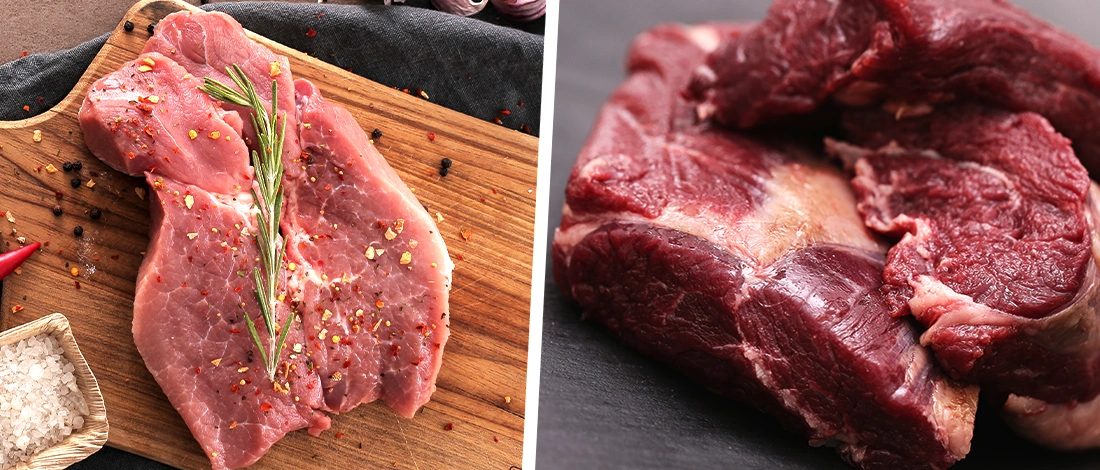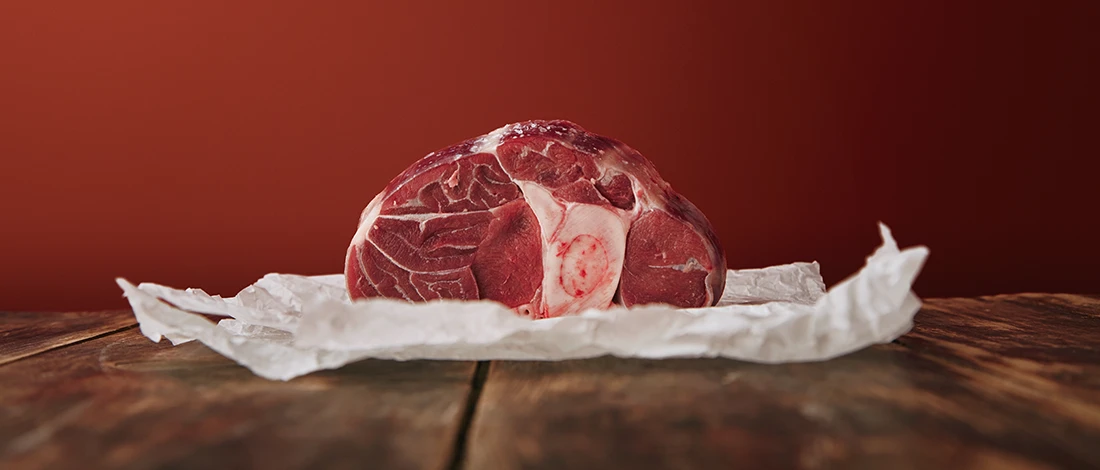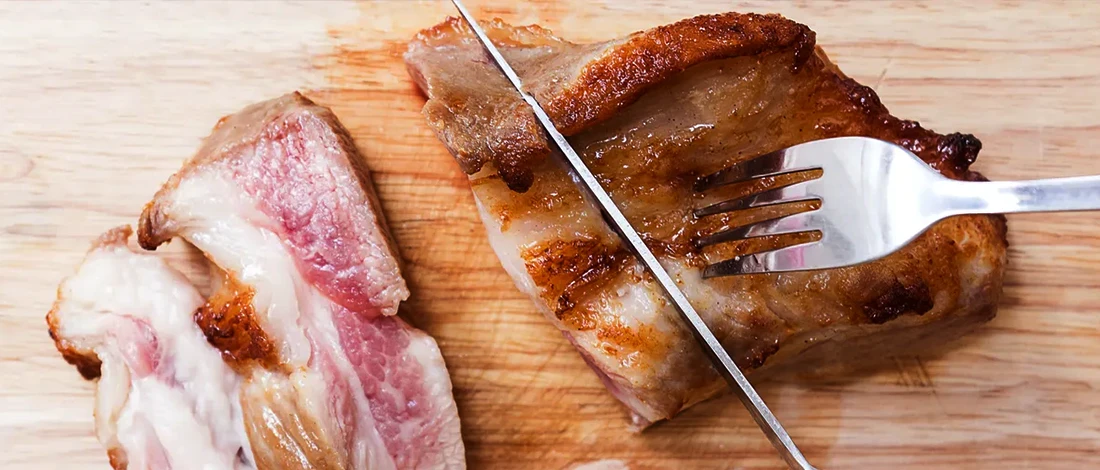As a committed carnivore with a keen interest in health and wellness, I've often pondered the safety of consuming raw or undercooked beef—especially in scenarios where cooking options may be limited.
This prompted me to dig deep into the scientific literature to explore the risks and nuances associated with eating beef in its less-than-fully-cooked state.
Today we'll delve into why consuming raw beef can be unsafe and lead to illness. But don't worry, it's not all cautionary tales; we'll also discuss circumstances where certain raw meat dishes are permissible, as well as why canned or cooked-to-rare/medium-rare meats pose fewer risks.
So if you're curious about the boundaries of beef consumption, read on for a comprehensive breakdown.
Take a look at the discussion below to understand why raw beef is unsafe to eat and how it can make you ill.
We also talk about how you can eat certain raw meat dishes and how canned or cooked rare/medium-rare meat is safer.
Quick Summary
- Certain raw beef dishes like tartare, carpaccio, and kachilaa can be consumed if prepared with high-quality meat and proper hygiene practices.
- Raw beef is not safe to eat due to bacteria like salmonella and E. coli, which can cause food poisoning.
- Medium-rare steaks and raw, canned beef are safer to eat as they reach certain heat temperatures that kill bacteria.
Is Raw Beef Safe To Eat?

In simple terms, raw beef or raw steak is not safe to eat and should not be consumed without cooking.
Raw meat contains various bacteria such as salmonella, E. coli, Staphylococcus aureus, and shigella.
According to the FDA (Food and Drug Administration), you should not eat raw and even undercooked beef because it makes you susceptible to developing foodborne illnesses – sometimes leading to death [1].
Some symptoms of sickness from eating raw beef can range from stomach aches, nausea, diarrhea, vomiting, pain, and even fever.
Some people tend to be unaware that it is all caused by eating raw meat because symptoms can often show up a whole week later [2].
It is easy to get sick from raw meat simply through contamination, even if you don’t eat it.
Archie Magoulas, a USDA food safety expert, mentions, “Safe steps in food handling, cooking and storage are essential to prevent foodborne illness. You can’t see, smell or taste harmful bacteria that may cause illness." [3]
When Can You Eat Raw Beef?
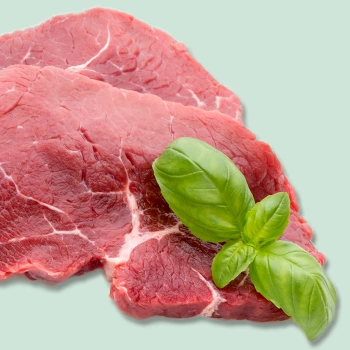
It’s not so much about when you can eat raw beef. It’s a lot more complex than that; however, the understanding is that you can eat meat that has been heated to specific temperatures and is still considered ‘‘raw’’.
Some people genuinely enjoy almost undercooked beef, like those who order rare steaks at a restaurant.
That means the steak has been seared on the outside, and the inside is still quite raw.
In that instance, it works well because the heat from searing usually kills the bacteria (the bacteria don’t penetrate through thick pieces of meat).
High-end restaurants offer certain raw beef dishes because their hygiene practices are top-notch, and the quality of their game is fresh from trusted butchers.
Raw beef dishes like tartare and carpaccio are considered delicacies.
You can eat them; however, there will always be a concern about bacteria causing illness because there’s no heat to destroy them.
Read More: How Long Can You Leave Raw Meat Out?
Is Rare-Cooked Meat Safe To Eat?
As mentioned earlier, many choose the rare-cooked option. Most people enjoy their beef on the raw side but want some type of heat for flavor, warm bites, and ensuring bacteria is killed.
You also find people choosing medium-rare options so that the internal temperature reaches some level of heat.
These are typically safer to eat than completely raw beef because the bacteria live on the outer layer and die with the heat.
The middle of the meat reaches an internal temperature that makes it safe to eat even though it is slightly undercooked.
When eating raw beef in the slightly undercooked category, such as rare or medium-rare, always keep in mind that although there is a level of safety, there is still a chance of foodborne illness.
Read More: What Is Red Liquid in a Steak?
Is Raw Canned Beef Safe To Eat?

Raw, canned beef is meat that is preserved. To preserve it, it has to often go through some form of a heating process, even at a minimum.
It is concluded as safe when that happens because the heat can kill the bacteria.
On the other hand, it is also recommended to always cook your canned meat before eating for the highest safety measure [4].
Canned meat can contain salt and vinegar for preservation.
These ingredients tend to cure and tenderize the meat and are safer to eat.
It is essential to check the condition of the meat before eating raw beef, and a quick rinse would reduce the risk of contamination, while a light fry will be an even better option.
Are Raw Beef Delicacies Safe To Eat?
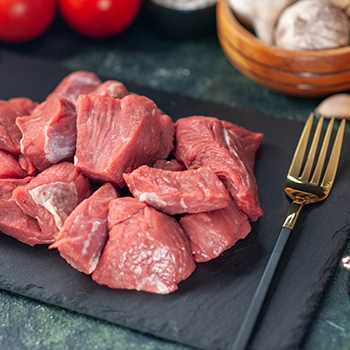
Raw beef dishes are considered delicacies because no anyone can make or offer them.
It has to be done with fresh, well-butchered meat in very high-controlled hygiene environments.
When done correctly, it is then considered safe to consume.
Dishes like beef tartare, carpaccio, and Kachilaa – to name a few, are examples of safe food. It means consuming raw beef prepared using these methods won't result in illnesses.
The only reason they are allowed consuming raw beef from these dishes is because of the environment they are made in.
You cannot make these dishes with beef bought from a regular supermarket or meat that has been stored for months on end (considered not fresh) [5].
Beef tartare and kachilaa are made with minced meat. Both the items are raw and risk giving you foodborne illness.
The ground meat even pressed together has cracks which means bacteria can penetrate through the entire dish.
The best way to eat it is by giving it a quick sear, allowing some heat to pass through.
Beef carpaccio is often made by slicing thin pieces of steak and serving it with olive oil.
Because the slices are so thin, it is taken as being tenderized; however, raw is raw and is still at risk of bacteria – leading to foodborne illnesses.
Although these dishes are deemed somewhat safe in the food industry, it is essential to eat at your own risk, take precautions, and remember that there is a high chance of illness if you are eating raw meat.
Related Articles:
References:
- https://www.fda.gov/food/people-risk-foodborne-illness/meat-poultry-seafood-food-safety-moms-be#:~:text=Here's%20how%20to%20stop%20it,and%20handling%20foods%20at%20home.&text=Marinades%20used%20on%20raw%20meat,seafood%20can%20contain%20harmful%20bacteria.
- https://www.fsis.usda.gov/careers/who-works-us/archie-magoulas-technical-information-specialist
- https://www.healthline.com/nutrition/foods-that-cause-food-poisoning
- https://pubmed.ncbi.nlm.nih.gov/26349100/
- https://www.webmd.com/food-recipes/features/how-to-can-meat-and-poultry-at-home
- https://pubmed.ncbi.nlm.nih.gov/26349100/


